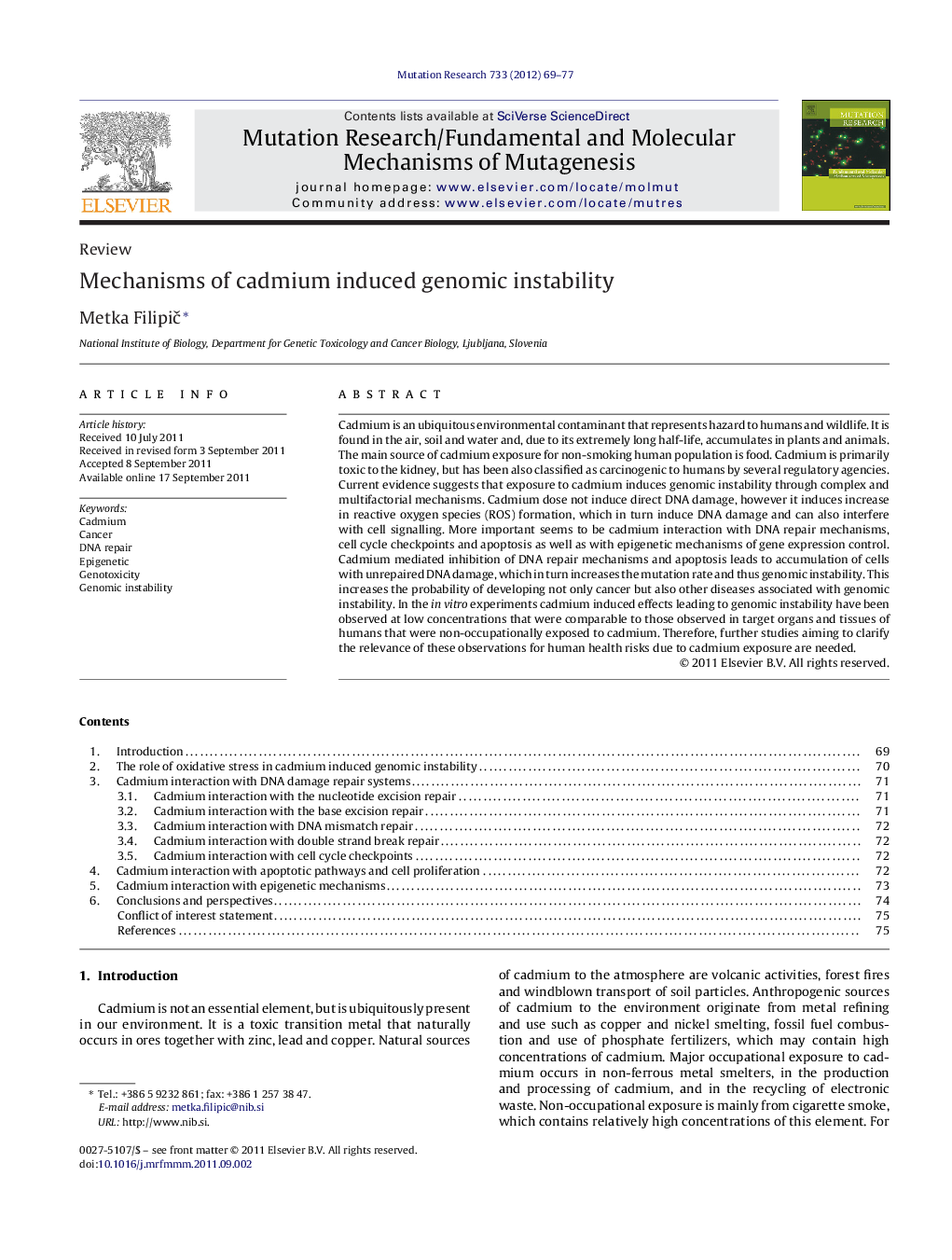| کد مقاله | کد نشریه | سال انتشار | مقاله انگلیسی | نسخه تمام متن |
|---|---|---|---|---|
| 2146455 | 1548352 | 2012 | 9 صفحه PDF | دانلود رایگان |

Cadmium is an ubiquitous environmental contaminant that represents hazard to humans and wildlife. It is found in the air, soil and water and, due to its extremely long half-life, accumulates in plants and animals. The main source of cadmium exposure for non-smoking human population is food. Cadmium is primarily toxic to the kidney, but has been also classified as carcinogenic to humans by several regulatory agencies. Current evidence suggests that exposure to cadmium induces genomic instability through complex and multifactorial mechanisms. Cadmium dose not induce direct DNA damage, however it induces increase in reactive oxygen species (ROS) formation, which in turn induce DNA damage and can also interfere with cell signalling. More important seems to be cadmium interaction with DNA repair mechanisms, cell cycle checkpoints and apoptosis as well as with epigenetic mechanisms of gene expression control. Cadmium mediated inhibition of DNA repair mechanisms and apoptosis leads to accumulation of cells with unrepaired DNA damage, which in turn increases the mutation rate and thus genomic instability. This increases the probability of developing not only cancer but also other diseases associated with genomic instability. In the in vitro experiments cadmium induced effects leading to genomic instability have been observed at low concentrations that were comparable to those observed in target organs and tissues of humans that were non-occupationally exposed to cadmium. Therefore, further studies aiming to clarify the relevance of these observations for human health risks due to cadmium exposure are needed.
Journal: Mutation Research/Fundamental and Molecular Mechanisms of Mutagenesis - Volume 733, Issues 1–2, 1 May 2012, Pages 69–77